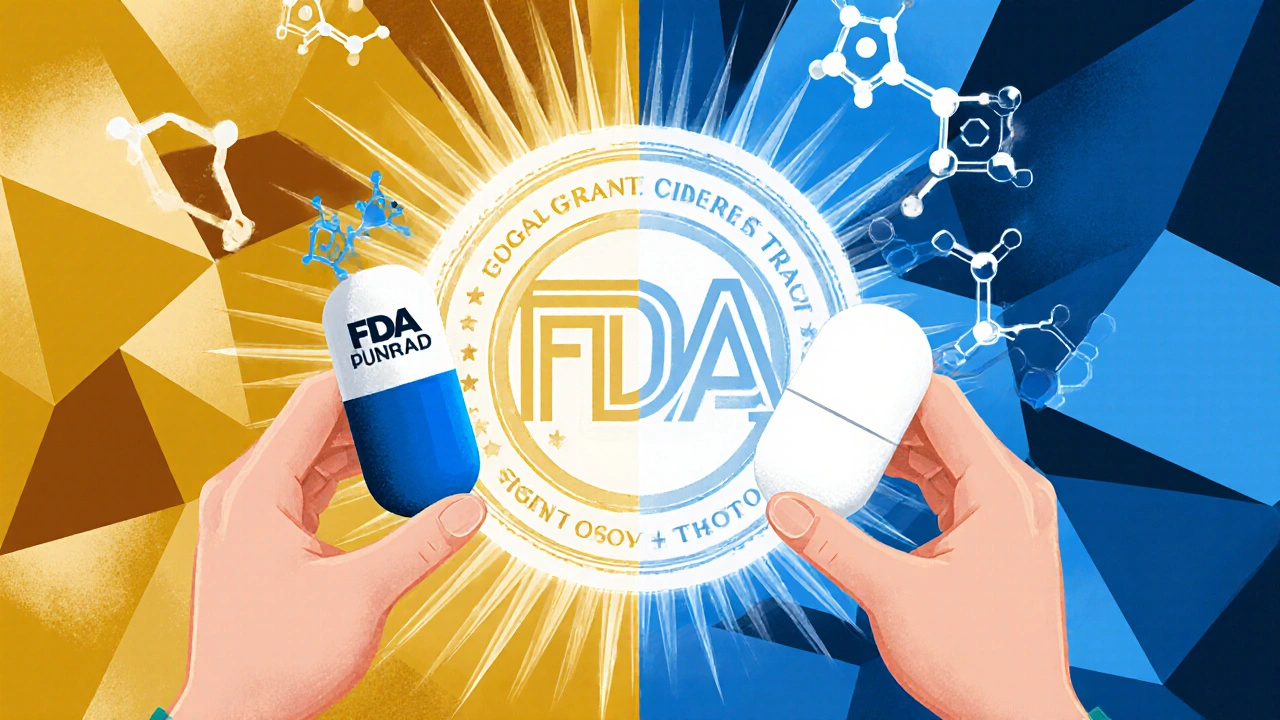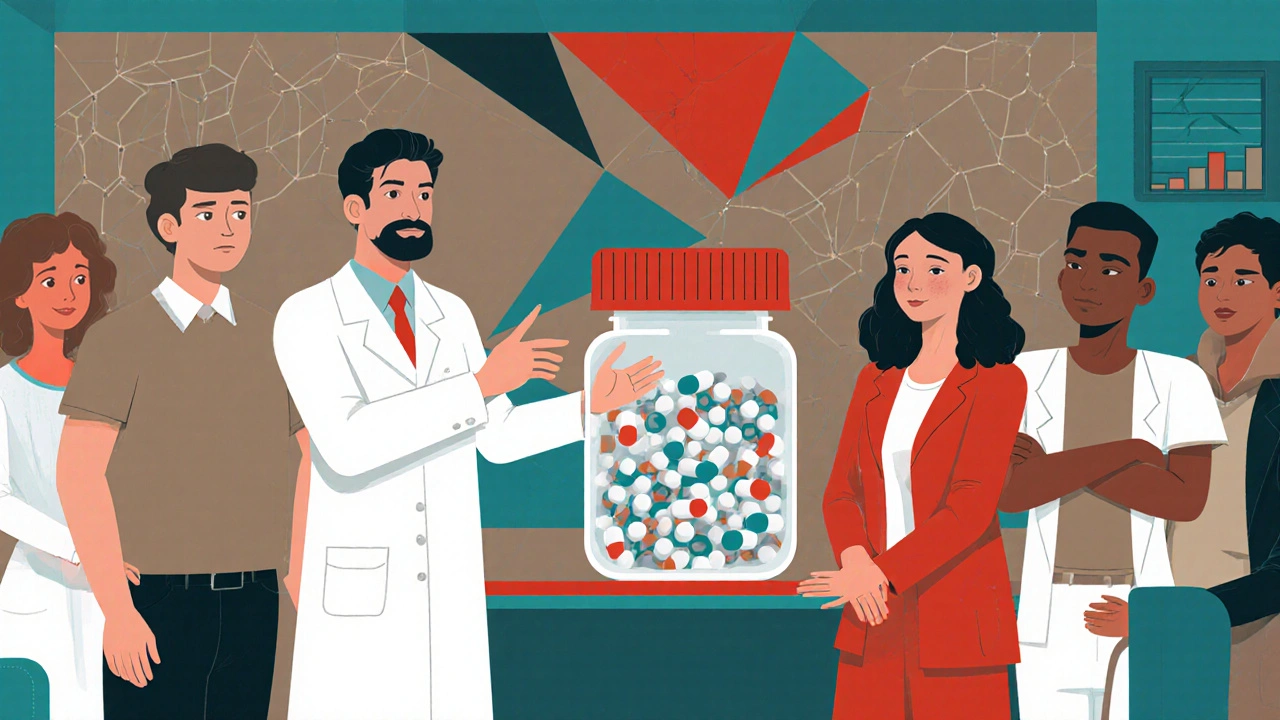SEARCH
Patient Trust: How to Build Confidence in Generic Medications


More than 9 out of 10 prescriptions filled in the U.S. are for generic medications. Yet, many patients still hesitate-wondering if the cheaper version really works the same. You’ve seen it: the pharmacist hands you a pill that looks nothing like the brand you’ve been taking. Same name on the bottle, different color, shape, even the imprint is off. Your first thought? Is this safe?
The truth is, every generic drug approved by the FDA contains the exact same active ingredient, in the same strength, and works the same way as its brand-name counterpart. The difference isn’t in what it does-it’s in what it’s made of. The inactive ingredients-fillers, dyes, coatings-can vary. That’s why a generic version of lisinopril might be white and oval, while the brand is blue and capsule-shaped. But the medicine inside? Identical.
Why Do People Doubt Generic Medications?
Distrust doesn’t come from nowhere. It’s shaped by experience, messaging, and sometimes, bad timing.
One patient in Toronto switched from brand-name Synthroid to generic levothyroxine and noticed no change in energy levels or lab results. Another, after switching to generic Lyrica, developed nausea they’d never had before. They didn’t know that inactive ingredients can cause minor reactions in sensitive people-even if the active drug is identical. That’s not a failure of the generic. It’s a quirk of human biology.
Studies show 30% of patients in Greece prefer brand-name drugs because they believe they’re more effective. In the U.S., that number is lower-only 6% say they don’t trust generics-but even that small group holds strong beliefs. Why? Because they’ve been told, implicitly or explicitly, that brand = better. Advertisements, packaging, even the way doctors say, “I’d prescribe the brand if it were my mom,” reinforces that idea.
Then there’s the pill itself. If your pill changes shape or color every refill, it’s natural to wonder if something’s wrong. A 2022 study found 42.7% of patients who disliked generics cited inconsistent appearance as their main complaint. That’s not a drug issue-it’s a communication issue.
What the Science Actually Says
The FDA doesn’t approve generics lightly. Every single one must prove it delivers the same amount of active ingredient into the bloodstream at the same rate as the brand. That’s called bioequivalence. The standard? The generic’s absorption must fall between 80% and 125% of the brand’s. In practice, most land between 90% and 110%. That’s tighter than the margin for error in many lab tests.
And the results? A 2023 Health Policy Today survey found 94% of Americans believe generics are as safe and effective as brand-name drugs. That’s not opinion-it’s lived experience. Medicare beneficiaries who switched from Eliquis to apixaban saved $1,200 a year without a single change in blood clotting tests. Patients on generic metformin, sertraline, or atorvastatin report the same outcomes as those on the brand.
Even in sensitive areas like epilepsy or thyroid disease-where people assume tiny differences matter-studies show no increase in seizures or TSH fluctuations when switching to generics. The FDA, Harvard Medical School, and the World Health Organization all agree: generics are interchangeable.
Who Trusts Generics-and Who Doesn’t
Trust isn’t random. It follows patterns.
People over 60 are more likely to trust generics than younger adults. Why? They’ve lived through decades of price hikes and seen how much money they save. Employed people trust them more too-likely because they’re used to making cost-conscious choices. Meanwhile, those with higher education levels tend to be more skeptical, not because they know more, but because they’ve been exposed to more noise.
One study in Greece found that patients with lower education levels trusted their doctors more when told a generic was fine. That’s telling. It means trust isn’t about knowledge-it’s about who’s delivering the message.
And that’s where the real problem lies.

The Doctor’s Role in Building Trust
Patients don’t trust pills. They trust people.
When a doctor says, “This generic will work just as well,” and explains why, patients accept it. When a doctor says, “It’s the same thing,” and walks out the door, patients doubt it.
A 2024 study in PLOS ONE found that a doctor’s confidence in generics directly shaped patient confidence. If the provider seemed unsure, the patient became hesitant. If the provider said, “I’ve prescribed this to hundreds of patients-here’s what to watch for,” trust shot up.
At Mayo Clinic, pharmacists spend 15-20 minutes with patients switching to generics. They show them side-by-side comparisons, explain why the pill looks different, and set up a follow-up check-in. Result? 92% patient satisfaction. The national average? 68%.
It’s not about the drug. It’s about the conversation.
What You Can Do Right Now
You don’t need to be a scientist to feel confident about generics. Here’s how to take control:
- Ask your doctor: “Is there a generic version of this? Is it right for me?” Don’t assume they’ll bring it up. They’re busy. You have to lead.
- Ask your pharmacist: “Why does this pill look different?” They’ll show you the FDA bioequivalence data. Most pharmacies have printed guides.
- Track your response: If you switch, note how you feel over the next 30 days. Energy? Sleep? Pain? Mood? Write it down. Most people notice no change. A few notice a small difference-usually due to inactive ingredients, not the drug itself.
- Check your insurance: Many plans require generics unless your doctor writes “dispense as written.” Don’t let formulary rules make the decision for you.
- Look for QR codes: By 2025, 78% of major generic manufacturers are putting QR codes on bottles that link to FDA approval data, ingredient lists, and manufacturing info. Scan it. See for yourself.
Why This Matters Beyond Your Wallet
Generics aren’t just cheaper. They’re essential.
In 2023, Americans spent $643 billion on prescription drugs. Generics made up only 23% of that cost-but filled 90% of the prescriptions. Without them, millions would skip doses or go without treatment. A diabetic who can’t afford insulin won’t take it. A senior choosing between groceries and their blood pressure pill? That’s not a choice. It’s a crisis.
When you trust a generic, you’re not just saving money. You’re helping the system work. You’re making care affordable for everyone else too.
And if you’ve had a bad experience? You’re not wrong. But the problem isn’t the generic. It’s the lack of explanation. The surprise. The silence.
The Future Is Transparent
Change is coming. The FDA’s new ‘Know Your Options’ campaign, launched in January 2024, is spending $15 million to clear up myths. AARP and generic drug makers are teaming up to create simple guides for seniors. CVS is testing AI tools that send personalized messages based on your prescription history: “You switched to generic metformin last month. Here’s what to expect.”
Pharmacies are starting to label generics with the brand name they replace. Some bottles now say: “This is the generic version of Lipitor. Same active ingredient: atorvastatin.” No guesswork.
By 2030, generics will still make up 85-90% of prescriptions. But the real win won’t be in volume. It’ll be in confidence.
You don’t need to believe in generics because someone told you to. You need to believe in them because you understand them. And now, you do.